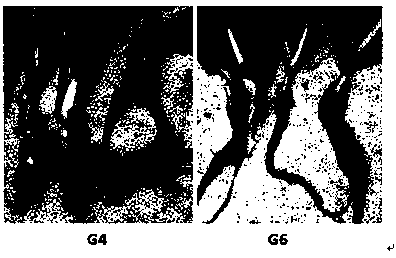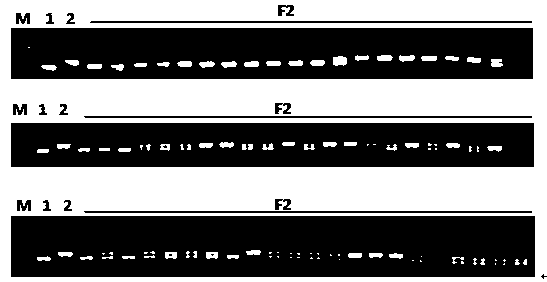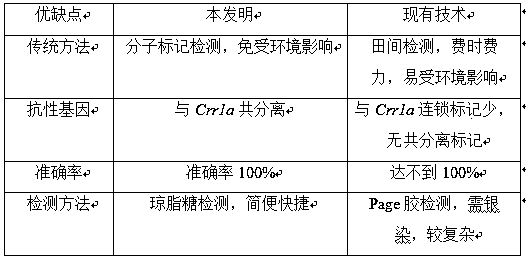Molecular marker KB2 for identifying brassica rapa clubroot resistance and primer and application thereof
An anti-clubroot, molecular marker technology, applied in the determination/inspection of microorganisms, biochemical equipment and methods, DNA/RNA fragments, etc. The results are easy to confuse and other problems, so as to achieve the effect of simple and quick detection, accurate distinction and good specificity.
- Summary
- Abstract
- Description
- Claims
- Application Information
AI Technical Summary
Problems solved by technology
Method used
Image
Examples
Embodiment 1
[0032] Obtaining F2 Segregation Population of Chinese Cabbage Clubroot Disease-resistant Materials
[0033] The Chinese cabbage clubroot disease-resistant material G6 was used as the female parent, and the susceptible material G4 was used as the male parent to obtain the F1 generation. The plants of the F1 generation were identified as disease-resistant materials by field disease resistance identification. The segregation population of F2 generation obtained by selfing of F1 generation was used for phenotype identification and molecular marker detection of Chinese cabbage clubroot.
Embodiment 2
[0035] Phenotypic Identification and Molecular Marker Detection of Clubroot Disease in F2 Generation Population of Chinese Cabbage
[0036] 1. Phenotypic identification of clubroot resistance in F2 population of Chinese cabbage
[0037] Taking the F2 population obtained in Example 1 as material, inoculate Physiological race No. 4 of Plasmodium phylloxera after sowing, the inoculation and investigation methods refer to the literature "Wang Weihong et al., Identification of Physiological Races of Cruciferous Vegetable Physiological Races and Resistance Source Screening, Chinese Vegetables, 2013 Vol. 1(12): 55-60". The results showed that among the 64 F2 generation Chinese cabbage plants, 47 were resistant and 17 were susceptible ( figure 1 ).
[0038] 2. Molecular marker detection of clubroot resistance in F2 population of Chinese cabbage
[0039]The CTAB method was used to extract the leaf genomic DNA of the clubroot-resistant material G6, the susceptible material G4, and t...
PUM
 Login to View More
Login to View More Abstract
Description
Claims
Application Information
 Login to View More
Login to View More - R&D
- Intellectual Property
- Life Sciences
- Materials
- Tech Scout
- Unparalleled Data Quality
- Higher Quality Content
- 60% Fewer Hallucinations
Browse by: Latest US Patents, China's latest patents, Technical Efficacy Thesaurus, Application Domain, Technology Topic, Popular Technical Reports.
© 2025 PatSnap. All rights reserved.Legal|Privacy policy|Modern Slavery Act Transparency Statement|Sitemap|About US| Contact US: help@patsnap.com



